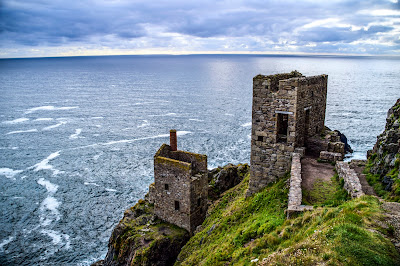I have been now posting on the great Atlantic circle route for years and filling in details as they come up. Understand that the copper fleet sailed from Bimini after assembly to the latitude of Lewis and then entered the Irish Sea. They picked up some copper but acquired tin in the Bristol Channel from adjacent Cornwall. Fully loaded they proceeded South to a port near Gibraulter. The metal then was likely offloaded for ships running into the Levant and Egypt in particular. The ships themselves in season then sailed westward for Bimini. It was that easy folks. Two latitudes to stick to. and the gulf stream to make the summer crossing fast.
Bimini collected Copper from Poverty Point and from many other sources as well and surely tin from the Andes. The ultra high quality native copper from Lake Superior anchored this trade until 1159 BC. Afterward, copper in the form of Brass came out of Georgia and supported this reduced trade until Columbis.
Caesar did run across this fleet and fought them, but i suspect that the fleet did a shoot and scoot once they understood hte quality of Roman Arms.
All this is why Gastonbury is so wonderfully important and yes the Druid Colleges were nearby as well. Jesus had ample reason to take training there, in Egypt and in India and anywhere in between.
DID BRONZE AGE, BIBLE LAND, TIN COME FROM BRITISH MINES?
January 16, 2021 by AReditorialDept
https://atlantisrising.com/2021/01/16/did-bronze-age-bible-land-tin-come-from-british-mines/?
Thousands of years before the time of Jesus, artisans north of the Mediterranean perfected a metal alloy made from a combination of copper and tin called bronze. From 3000 to 1200 BC, the Bronze Age would give rise, not only to many marvelous artifacts, as well as writing, and much of what we now call civilization, but, until recently, it has not been entirely clear where all the copper and tin came from. Copper, it has been thought, came from various European mines, though there is evidence pointing to sources in North America. As for tin: the source has been a long-standing mystery. Conventional research has pointed to somewhere in Central Asia, but a new study threatens to change that.
Bronze age tin ingots from a thousand years BC found off the coast of Israel have been shown to be from Cornwall and Devon in Britain. Isotopic data was analyzed by German researchers at Heidelberg University, and the Curt Engelhorn Center for Archaeometry in Mannheim. Other ingots found in Greece and Turkey were also determined to be from Cornwall. The study was done by Dr. Ernst Pernicka and colleagues. The main takeaway: international trading routes 3000 years ago were much more advanced than is generally believed.
(https://www.archaeology-world.com/scientists-find-that-tin-found-in-israel-from-3000-years-ago-comes-from-cornwall/)
Naming Cornwall as the source of middle eastern tin, corroborates at least one alternative narrative relating to Jesus. Joseph of Arimathea, identified in the New Testament as the donor of Jesus’ tomb, was also said in church tradition to be a wealthy tin merchant. According to apocryphal sources, Joseph traveled to Cornwall with the teenage Jesus, and returned after the crucifixion to bring the ‘Holy Grail’ and Christianity to Britain.

No comments:
Post a Comment